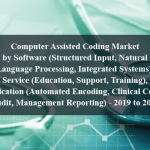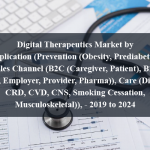OVERVIEW
Research by Global Market Studies has reported a CAGR of 6.2% for the Airway Stent/Lung Stent Market, expecting to expand to a value of USD 47.16 million by 2028.
An airway stent, also known as a lung stent or tracheobronchial stent, is a medical device designed to provide structural support and maintain the patency (openness) of the airways in the respiratory system. These stents are typically used when there is a narrowing or obstruction in the trachea (windpipe) or bronchi (air passages within the lungs) due to various medical conditions. The primary purpose of an airway stent is to alleviate breathing difficulties, restore proper airflow, and improve the overall lung function of the patient.
Airway stents are used to treat malignant airway obstruction, benign airway stenosis, tracheomalacia, bronchomalacia, postoperative complications, recurrent respiratory papillomatosis, tracheoesophageal fistula, and endobronchial hemorrhage. They provide structural support, prevent or alleviate narrowing, maintain bronchial shape, and control bleeding.
Table of Content
Market Dynamics
Drivers:
The increasing prevalence of respiratory diseases, such as lung cancer and COPD, is driving the demand for airway stents as a vital treatment option. The aging population is expected to increase the prevalence of age-related airway issues, contributing to the growth of the airway stent market. Technological advancements in stent design, materials, and manufacturing processes are improving the efficacy, safety, and lifespan of airway stents.
Airway stents offer a less invasive alternative to traditional surgical interventions, reducing hospital stays, quicker recovery times, and improving patient outcomes. Increased awareness and diagnosis of airway stents among patients and healthcare professionals contributes to higher diagnosis rates and treatment adoption. Medical tourism and access to care are also boosting the demand for these devices globally. Regulatory support ensures the safety and efficacy of airway stents through regulatory agencies’ approvals and guidelines, bolstering their adoption.
Opportunities:
Self-Expanding Metallic Stents provide structural support for various airway shapes and sizes, while Silicone Stents are medical-grade silicone used in pediatric cases and temporary stenting. Hybrid Stents combine the features of metallic and silicone stents, offering a balance between flexibility, radial strength, and adaptability to patient anatomy. Biodegradable Stents are being developed to dissolve over time as the airway heals, eliminating the need for stent removal procedures.
Customized stent solutions cater to individual patient needs, while advanced imaging techniques like bronchoscopy, fluoroscopy, and 3D imaging aid in precise stent placement. Innovative delivery systems facilitate accurate stent placement, enhancing procedural success and minimizing trauma. Patient education and support are offered by manufacturers and healthcare providers, while clinical training and education programs are provided for healthcare professionals. Research and development efforts focus on improving stent materials, designs, and biocompatibility, enhancing patient comfort and outcomes.
Restraints:
Airway stent placement can lead to complications and adverse events, such as migration, granulation tissue formation, stent fracture, and airway irritation. Over time, airway stents may become occluded, requiring additional interventions.
Limited reimbursement policies and coverage can affect patient access and adoption, especially in regions with stricter healthcare regulations. Cost of procedures, technical expertise, and ethical and cultural factors can also impact the availability of airway stent placement. Despite advancements, complications and adverse events remain a concern.
Regional Information:
North America: North America, including the United States and Canada, has a developed healthcare system with advanced medical technologies. The high prevalence of respiratory diseases, a growing aging population, and access to innovative treatments contribute to the demand for airway stents.
Europe: European countries also have well-established healthcare systems and a high prevalence of respiratory conditions. Countries with aging populations and advanced healthcare infrastructure are likely to have a significant demand for airway stents.
Asia-Pacific: The Asia-Pacific region has a mix of developed and developing economies. The rising healthcare investments, increasing awareness, and growing prevalence of respiratory diseases contribute to the expansion of the airway stent market in countries like China, India, Japan, and South Korea.
Recent Developments:
• June 2022: Boston Scientific offered USD 230 million for M.I.Tech, a Korean maker of gastrointestinal and airway stents. The buyout is likely to hand over ownership of about 64% of the company to Boston Scientific.
• February 2022: Micro-Tech Endoscopy introduced the first self-expanding tracheobronchial nitinol y-stent. The Y-Shaped Tracheal Stent System is designed to be a flexible, compliant device to aid in treating malignant neoplasms at the tracheobronchial carina.
Key Players:
Boston Scientific Corporation, Taewoong Medical Co., Ltd., Cook Group, Micro-Tech (Nanjing) Co., Ltd. and Merit Medical Systems, Inc.
Frequently Asked Questions
1) What is the projected market value of the Airway Stent/Lung Stent Market?
– The Airway Stent/Lung Stent Market is expected to reach a value of USD 147.16 million by 2028.
2) What is the estimated CAGR of the Airway Stent/Lung Stent Market over the 2023 to 2028 forecast period?
– The Airway Stent/Lung Stent Market is expected to grow at a CAGR of approximately 6.2% from 2023 to 2028.
3) Who are the key players in the Airway Stent/Lung Stent Market?
– Boston Scientific Corporation, Taewoong Medical Co., Ltd., Cook Group, Micro-Tech (Nanjing) Co., Ltd. and Merit Medical Systems, Inc.
4) What are the drivers for the Airway Stent/Lung Stent Market?
– Airway stent demand rises due to respiratory diseases, aging population, and technological advancements. They offer less invasive treatment, reduced hospital stays, and improved patient outcomes.
5) What are the restraints and challenges in the Airway Stent/Lung Stent Market?
– Airway stent placement can cause complications and adverse events, including migration, granulation tissue formation, fracture, and irritation. Limited reimbursement policies, cost, technical expertise, and ethical factors impact patient access and adoption.
6) What are the key applications and offerings of the Airway Stent/Lung Stent Market?
– Airway stents treat various conditions, providing structural support, preventing narrowing, maintaining bronchial shape, and controlling bleeding.
7) Which region is expected to drive the market for the forecast period?
– Asia Pacific has the highest value share in the global market and is expected to dominate shares in forecast period.
Why Choose Us?
Insights into Market Trends: Global Market Studies reports provide valuable insights into market trends, including market size, segmentation, growth drivers, and market dynamics. This information helps clients make strategic decisions, such as product development, market positioning, and marketing strategies.
Competitor Analysis: Our reports provide detailed information about competitors, including their market share, product offerings, pricing, and competitive strategies. This data can be used to inform competitive strategies and to identify opportunities for growth and expansion.
Industry Forecasts: Our reports provide industry forecasts, which will inform your business strategies, such as investment decisions, production planning, and workforce planning. These forecasts can help you to prepare for future trends and to take advantage of growth opportunities.
Access to Industry Experts: Our solutions include contributions from industry experts, including analysts, consultants, and subject matter experts. This access to expert insights can be valuable for you to understand the market.
Time and Cost Savings: Our team at Global Market Studies can save you time and reduce the cost of conducting market research by providing comprehensive and up-to-date information in a single report, avoiding the need for additional market research efforts.












